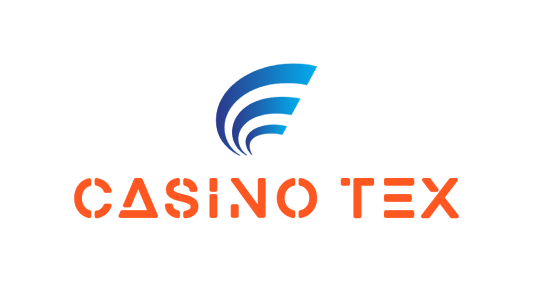In the rapidly evolving world of iGaming, making the decision to build or buy a platform is pivotal. This choice affects not only our financial investment but also our strategic direction and competitive advantage. A comprehensive cost structure analysis is crucial to guide this decision, helping to uncover hidden costs and potential savings that might not be immediately apparent.
Building a Platform:
- Full customization and control over features and design.
- Significant development costs.
- Ongoing maintenance expenses.
Buying an Existing Platform:
- Expedites market entry.
- Potentially limits customization and unique branding.
- May involve licensing fees or other recurring costs.
Considerations for Decision Making:
- Financial Outlay: Evaluate the initial and ongoing costs associated with each option.
- Customization Needs: Determine how much control you need over the platform’s features and design.
- Time to Market: Consider how quickly you need to launch the platform.
- Long-term Objectives: Align the decision with your growth aspirations and strategic goals.
By examining the intricacies of building versus buying, we can weigh their costs and benefits effectively to align with our long-term objectives and growth aspirations.
Development Costs
When evaluating development costs, we must consider whether building or buying an iGaming platform aligns better with our budget and long-term goals.
Building a Platform:
- Offers complete control over customization.
- Allows tailoring of features to fit our unique vision.
- Fosters a sense of belonging within our team, as everyone contributes to something truly ours.
- However, it requires a potentially daunting financial commitment, which might not be feasible for all.
Buying an Existing Platform:
- Provides a quicker time-to-market, enabling us to engage with our audience sooner.
- Strengthens our community by creating a shared experience.
- While customization flexibility might be limited, it involves a reduced initial investment.
We should weigh these factors carefully, considering how each option impacts our sense of community as well as our bottom line.
In the end, our choice should reflect both our financial realities and our collective vision.
Maintenance Expenses
When considering maintenance expenses, we must evaluate the ongoing costs and resources required to keep our iGaming platform running smoothly.
It’s crucial to understand that maintenance costs can vary significantly depending on whether we build or buy our platform.
Building Our Platform:
- May initially seem more attractive due to customization flexibility.
- Often results in higher long-term maintenance expenses.
- Requires a dedicated team to:
- Handle updates.
- Troubleshoot issues.
- Ensure security.
- Adds to our development costs.
Buying a Platform:
- Might offer reduced maintenance expenses.
- Many purchased solutions include ongoing support as part of the package.
- Allows us to focus on our core business without worrying about technical upkeep.
- Could help allocate resources more efficiently and achieve a faster time-to-market.
- May face limitations in customization flexibility.
As a community-driven team, we should weigh these factors carefully to ensure our platform remains sustainable and meets our unique needs.
Market Entry Speed
When considering market entry speed, we must assess how quickly our iGaming platform can launch and begin generating revenue. Speed is crucial in this competitive industry, and each day counts as we strive to capture our share of the market.
Building vs. Buying a Platform:
-
Building Our Own Platform:
- Significant development costs.
- Longer time-to-market.
- Potential delays impacting early revenue opportunities.
- Offers potential customization flexibility.
-
Buying a Ready-Made Solution:
- Drastically shortens time-to-market.
- Allows for quicker launch and community engagement.
- Initial limitations in customization, but possible adaptations over time.
The trade-off between development costs and speed impacts our strategy. While building demands a substantial investment of time and resources, a purchased platform lets us enter the market quickly and adapt as needed.
By weighing these factors, we ensure our approach aligns with our goals and fosters a sense of belonging within our target audience.
Customization Flexibility
Customization Flexibility
We prioritize the ability to tailor our iGaming platform to meet specific market needs and user preferences. Customization flexibility is crucial in creating an engaging user experience that fosters a sense of belonging among our players.
Build vs. Buy Decision
When deciding between building or buying a platform, we consider how each option impacts our development costs and time-to-market.
-
Building a Platform
- Offers unparalleled customization.
- Comes with higher development costs.
- Results in a longer time-to-market.
- Allows us to create a platform perfectly aligned with our brand and audience needs.
- Requires significant investment.
-
Buying a Platform
- Reduces development costs.
- Speeds up our time-to-market.
- May limit customization flexibility.
- Pre-built solutions can be adapted to some extent, but personalization often falls short compared to a custom-built platform.
Balancing Needs
Ultimately, our choice depends on balancing the need for customization with budget constraints and market entry timelines.
Licensing Fees
Licensing fees are a significant factor in our decision-making process when considering whether to build or buy an iGaming platform. As a community focused on making smart choices, we understand that these fees can impact our overall budget, influencing both our development costs and the customization flexibility we desire.
Building a Platform:
- Lower licensing fees
- Greater control and flexibility in customization
- Challenges with longer development timelines
- Potential time-to-market delays
Buying a Platform:
- Higher licensing fees
- Accelerated launch, allowing us to engage quickly with our audience
- Reduced flexibility in customization, possibly limiting our ability to tailor the platform to our unique needs
Together, we must carefully balance these factors to foster a sense of belonging and success within our community. By weighing the pros and cons of each option, we aim to make informed decisions that align with our overall goals and values.
Financial Comparison
When comparing the financial aspects of building versus buying an iGaming platform, we must evaluate both the initial costs and ongoing expenses to determine the most cost-effective approach.
Building a Platform:
- Requires significant development costs upfront.
- Offers customization flexibility tailored to our unique community’s needs.
- Provides personalized control over features.
- Aligns perfectly with long-term goals, fostering a sense of ownership and belonging.
Buying a Ready-Made Platform:
- Often involves a lower initial financial outlay.
- Includes ongoing expenses such as licensing fees and periodic updates.
- Allows quick access to established systems.
- Provides immediate access to a tried-and-tested solution but may limit customization flexibility.
As we weigh these options, we must consider how each aligns with our budget and strategic vision. Choosing a path that not only meets our financial criteria but also enhances our collective experience is crucial.
Time-to-Market Analysis
Evaluating Time-to-Market for iGaming Platforms
When considering the launch speed of an iGaming platform, there are two primary approaches:
-
Building from Scratch:
- Typically takes longer to develop.
- Offers extensive customization options.
-
Purchasing a Ready-Made Solution:
- Significantly reduces time-to-market.
- Allows for quick alignment with industry trends and audience expectations.
- Sidesteps the extensive development process.
- Saves on development costs.
- Frees up resources for other strategic initiatives.
Trade-Offs Between Speed and Customization
-
A pre-built platform:
- Provides rapid deployment.
- May limit customization flexibility.
-
Building a platform:
- Allows for extensive customization.
- Requires a longer development timeline.
Balancing Priorities
It’s essential to balance the desire for a personalized experience with the urgency of entering the market quickly. The decision should weigh:
- The benefits of accelerated time-to-market.
- The potential for enhanced customization.
Ultimately, the choice depends on aligning our strategic priorities with the available resources and market demands.
Long-term Strategic Alignment
Ensuring long-term strategic alignment requires us to carefully assess how our platform choice supports our overarching business goals and future growth plans. We need to consider whether building or buying our iGaming platform aligns with our mission and values.
Key Considerations:
- Development Costs vs. Benefits:
- Building a platform offers customization flexibility, allowing us to tailor it precisely to our vision.
- This option involves significant development costs and potentially longer time-to-market.
- Buying a platform might reduce initial costs and speed up time-to-market.
- However, it could limit our ability to customize features as our community evolves.
Decision Impact:
Ultimately, our decision should resonate with our collective aspirations and strategic objectives. By aligning our platform choice with these elements, we create a cohesive environment where every member of our team and community feels connected and invested in our shared success.
Conclusion
In conclusion, when deciding between building or buying an iGaming platform, consider several key factors:
-
Development Costs
- Assess the initial investment required for building a platform versus purchasing an existing one.
-
Maintenance Expenses
- Consider ongoing costs associated with maintaining and updating the platform.
-
Market Entry Speed
- Evaluate how quickly you can launch your platform with each option.
-
Customization Flexibility
- Determine the level of customization available with a built platform compared to a bought one.
-
Licensing Fees
- Analyze any licensing costs associated with using a purchased platform.
-
Financial Comparison
- Conduct a thorough financial analysis to compare the total cost of ownership for both options.
-
Time-to-Market Analysis
- Understand the impact of each choice on your time-to-market objectives.
-
Long-term Strategic Alignment
- Ensure that your choice aligns with your long-term business strategy and goals.
Each option has its pros and cons, so choose the one that aligns best with your business goals and resources.



